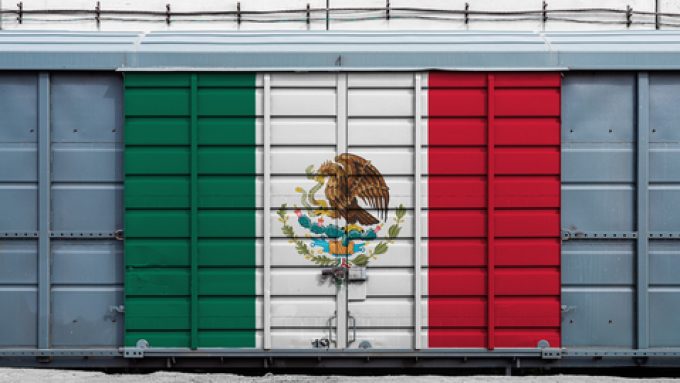Boxes piling into Mexican ports – but then piling up
Mexico’s box ports continue to boost throughput, fuelled by nearshoring and roaring trade with the ...

Notwithstanding a huge focus on passenger rail, a plan to run trains with freight, connecting Mexico’s Pacific coast with the Gulf of Mexico, is garnering interest as a possible alternative to the Panama Canal.
Andrés Manuel López Obrador, Mexico’s president, has a soft spot for trains – passenger ones, to be precise. The first solid manifestation of this has been the Mayan Train, a 1,554 km intercity line that traverses the Yucatan peninsula, which he proposed in 2018.
More recently, the president has looked to freight rail infrastructure to build out passenger operations. After initial noises, on 20 November he decreed that the state had the right to use freight rail routes for passenger travel. Rail companies holding concessions for freight operations could also run passenger services; otherwise they would have to accommodate third-party passenger activity on their tracks.
The industry has given the decree a guarded welcome. Oscar Del Cueto, president of the Mexican rail carriers’ association AMF, said the organisation was not opposed, as its analysis of the scheme showed no impact on freight operations. He stressed that adequate infrastructure and personnel capacity would be necessary to ensure it would work.
“The train infrastructure is quite old, and not very efficient,” said Mauricio de la Cerda, head of growth, North America at digital forwarder Nowports. Launched five years ago, the Mexico-based company today has branches in the US and six Latin American countries.
He added that the rail network’s current capacity would be needed to absorb future freight volumes if growth continues as expected.
Mexican rail giant Grupo Mexico Transportes (GMXT) expressed interest in developing passenger operations, and CPKC proposed a passenger service on its track from the Mexican capital to Laredo to study the concept.
The carrier has its eyes on growth in Mexico. It reported strong results for the fourth quarter, buoyed by flows to and from Mexico. Management is planning to acquire 1,000 reefer cars to start a refrigerated Mexico-US service from San Luis Potosi.
The convergence of growth driven by nearshoring and the problems of the Panama Canal has revived interest in another rail project in Mexico. Trade officials have begun to beat the drum about the Tehuantepec Interoceanic Corridor project, intermodal rail between the ports of Coatzacoalcos and Salina Cruz.
At about 300 km, this is the shortest connection between Mexico’s Pacific and Gulf coasts. The plan calls for a corridor that should be able to handle 1.4m teu a year by 2033.
Mr de la Cerda noted that the project has languished on the shelf for some time. He said: “It was never picked up. There was no need, and there were other priorities.”
Nobody views the concept purely in terms of an alternative to the Panama Canal, but rather as part of broader economic and logistics development in the region.
Moreover, the expansion of the rail corridor itself from one to three tracks would only be part of the development. Neither the port of Salina Cruz nor Coatzacoalcos has the capacity to handle the projected volumes, explained Mr de la Cerda. They would have to ramp up their capacity more than four-fold.
“We’re talking from about 300,000 teu to 1.3m teu,” he said.
Presumably, CPKC will not be very interested in the project. The Class I carrier owns 50% of the Panama Canal Railway (PCR), with the other half held by Mi-Jack Products, a US-based heavylift equipment maker.
Last month, Maersk announced that it was going to use the PCR to move containers by rail across Panama. CPKC CEO Keith Creel was quick to point out that Maersk is a strategic partner both for CPKC and PCR.
Comment on this article